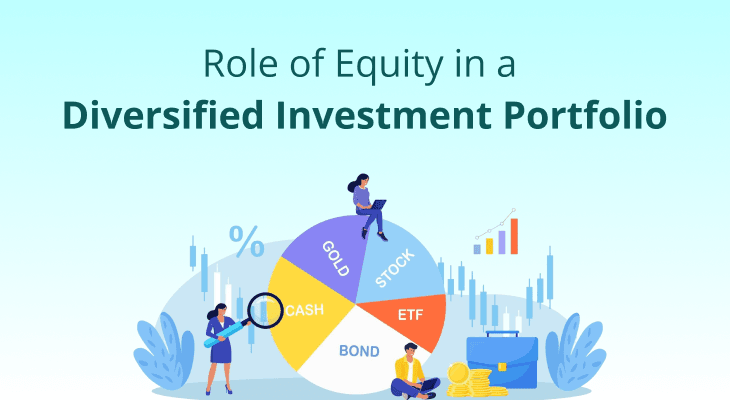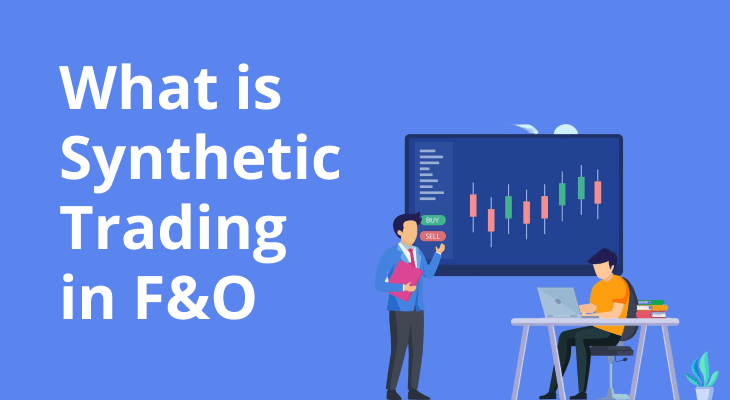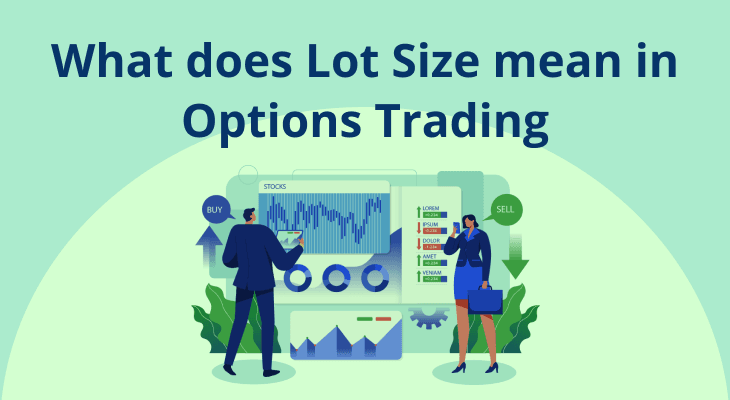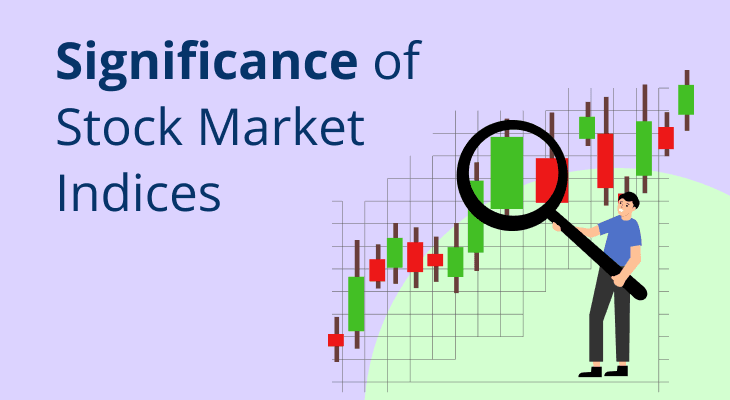
The Role of Equity in a Diversified Investment Portfolio
If you're starting your investment journey, you've likely heard the saying, "Don’t put all your eggs in one basket." This principle lies at the heart of diversification, a powerful strategy used by investors to manage risk and enhance long-term returns. Diversification simply means spreading your investments across different assets, industries, or geographies to reduce the impact of a poor performer on your overall portfolio.
Among the various asset classes like debt, real estate, gold, and others, equity plays a vital role in wealth creation. However, equity also comes with volatility, which is why equity diversification becomes crucial. A well-diversified equity portfolio can reduce the risk associated with individual stocks while still aiming for healthy returns.
Let us explore the role of equity in a diversified portfolio, how ETFs (Exchange-Traded Funds) offer a simple route to equity diversification, and how you can use them to create a robust and balanced investment portfolio.
The Importance of Equity in Wealth Creation
Equity represents ownership in a company. When you invest in shares or equity mutual funds, you become a part-owner in that business, giving you the opportunity to benefit from its profits and growth. Historically, equity has delivered better long-term returns compared to most other asset classes, especially when held over a period of 5 years or more.
Why Equity Matters in Your Portfolio:
- Higher Return Potential: Over the long term, equity investments have outperformed traditional fixed-income assets like FDs or government bonds.
- Beats Inflation: Equity offers returns that can outpace inflation, helping you preserve and grow real wealth.
- Capital Appreciation: As companies grow, the value of your equity holdings increases, contributing to overall wealth.
- Ownership Benefit: Equity holders often receive dividends and benefit from increased share prices.
However, equity is not without risks. Individual stocks can be volatile and unpredictable. That’s where equity portfolio diversification becomes essential as it helps you balance risk while keeping growth potential intact.
Building a diversified equity portfolio by picking individual stocks requires deep research, market understanding, and regular monitoring. For new or passive investors, this can be overwhelming. That’s where ETFs (Exchange-Traded Funds) come in and offer a convenient yet effective way of equity portfolio diversification.
What Are ETFs?
ETFs are investment funds (similar to mutual funds) that track a particular index, commodity, sector, or theme. They allow you to invest in a basket of stocks in a single transaction, thus, providing instant diversification, lower costs, and exposure to various sectors or themes. The one key way in which they differ from mutual funds is that just like individual shares, ETFs can be traded on stock exchanges, making it slightly more liquid than mutual funds.
Additional Read: What is an ETF?
Key Characteristics of ETFs:
- Index-Tracking: Most ETFs passively track indices like the Nifty 50, Sensex, or sectoral indices.
- Listed on Exchanges: You can buy and sell ETFs during market hours, just like regular shares.
- Low Cost: They have lower expense ratios compared to active mutual funds.
- Diversification in One Click: A single ETF gives exposure to multiple stocks.
For example, the Nifty 50 ETF allows you to invest in all the top 50 large-cap companies that are part of the index which, in turn, provides broad-based diversification in one go.
Other types of ETFs include:
- Sector ETFs: Banking ETF, IT ETF, Pharma ETF
- International ETFs: NASDAQ 100 ETF, S&P 500 ETF
- Thematic ETFs: ESG ETFs, Infrastructure ETFs
- Debt ETFs: Bharat Bond ETF
The Advantages of Equity Diversification Through ETFs
ETFs offer a straightforward, cost-effective path to equity portfolio diversification, especially for new investors or those with limited time to manage their portfolios actively.
1. Instant Diversification
With one ETF unit, you're investing in a portfolio of stocks. For instance, owning a single Nifty 50 ETF gives you exposure to 50 blue-chip companies across various sectors.
2. Lower Costs
Since most ETFs are passively managed, they have minimal management fees. Lower expense ratios mean more of your returns stay with you.
Example:
An active large-cap mutual fund might charge a 1.5–2% expense ratio, whereas an ETF tracking the same index may charge only 0.1–0.2%.
3. Transparency
ETFs disclose their holdings daily. You always know exactly what stocks you own and in what proportion, offering clarity for investors.
4. Liquidity
Because ETFs trade on exchanges like stocks, they can be bought or sold anytime during market hours, providing easy entry and exit.
5. Customisation Possibilities
You can tailor your equity portfolio by combining ETFs. For example, a Nifty 50 ETF (large-cap exposure), a Midcap 150 ETF (mid-cap exposure) or a Sectoral ETF (like Banking or Pharma for thematic exposure). This lets you build a flexible yet diversified equity portfolio.
Important Things to Think About When Investing in ETFs
While ETFs offer simplicity and benefits, they are not risk-free. It's important to consider certain factors before investing in them.
1. Tracking Error
Since ETFs try to replicate an index, they may slightly underperform due to expenses and market factors. This difference is called tracking error. Lower tracking error is better.
2. Liquidity Risk
Some ETFs have low trading volumes, leading to difficulty in buying/selling or getting a fair price. Stick to ETFs with high average daily volumes.
3. Market Risk
ETFs are subject to the same volatility and market fluctuations as the underlying stocks. Diversification reduces individual stock risk but does not eliminate market risk.
4. Expense Ratio & Taxation
Even low-cost ETFs come with small annual charges. Also, similar to mutual funds, capital gains from ETFs are taxed based on whether they are equity or debt-oriented, and their respective holding periods.
- Equity ETFs: STCG (less than 1 year) @ 20%, LTCG (more than 1 year) @ 12.5% after ₹ 1.25 lakh exemption
- Debt ETFs: Returns taxed as per your individual tax slab, irrespective of the holding period
Additional Read: How are ETFs Taxed in India - Taxation of Income from ETFs
5. Choice Overload
There are many ETFs available, and choosing the right one requires understanding your goal. Avoid chasing the newest or most popular ones without clarity.
How to Use ETFs to Diversify Your Equity Portfolio
ETFs offer a convenient way to build a balanced and diversified equity portfolio, especially if you want exposure to multiple segments of the market. Here's how to approach it step by step:
A Step-by-Step Approach:
Step 1: Define Your Investment Goal & Time Horizon
Are you investing for retirement, wealth accumulation, or income generation? Your goal will help decide which ETFs suit your needs.
Step 2: Decide Your Asset Allocation
Allocate between equity, debt, gold, and international exposure. For a moderate investor, a 60:20:10:10 split could be equity:debt:gold:international. If you are an aggressive investor, a higher allocation to small-cap or thematic ETFs may be suitable.
Step 3: Select Core Equity ETFs
Begin by including broad-based market ETFs that track large-cap indices. These ETFs usually invest in top-performing companies across various sectors, offering stability and consistent returns over the long run. They form the foundation of your equity portfolio and help mirror the performance of the overall market.
Step 4: Add Mid/Small-Cap or Sector ETFs (Optional)
Once you’ve built a stable base, consider including ETFs that track mid-cap or small-cap indices. These ETFs invest in companies with higher growth potential, although they may also carry slightly higher risk and volatility. Adding them can increase the growth capacity of your portfolio while still retaining the benefit of diversification.
Step 5: Consider Including Sectoral or Thematic ETFs (with Caution)
To tap into specific growth trends or industries, you can allocate a small portion of your portfolio to sectoral or thematic ETFs. These might include sectors like technology, healthcare, or renewable energy. While these ETFs offer focused exposure, they should be used cautiously, as they are more volatile and can be affected by sector-specific risks
Step 6: Explore International Equity ETFs for Global Diversification
Investing in ETFs that track international indices allows you to diversify beyond the domestic market. Global diversification reduces the impact of country-specific economic risks and can help you benefit from growth in international markets. You can consider developed markets, emerging economies, or specific regions depending on your investment objectives
Step 7. Add Gold ETFs for Asset Class Diversification
Equity diversification is powerful, but adding a different asset class, like gold, can further strengthen your portfolio. Gold ETFs track the price of physical gold and are known for acting as a hedge during market downturns. Including even 5–10% in gold ETFs can help protect your portfolio during periods of high volatility or inflation.
Step 8. Monitor and Rebalance Periodically
Your ETF portfolio needs regular monitoring to ensure it remains aligned with your goals. If certain segments outperform and grow disproportionately, your portfolio may become unbalanced. Selling a part of overgrown assets and reinvesting into underweighted ones is known as rebalancing. Ithelps maintain your desired risk-return balance.
Conclusion
Equity plays a vital role in wealth generation, but unmanaged equity exposure can lead to unwanted risk. By practising smart equity diversification using ETFs, you can build a well-structured equity portfolio that combines growth potential with risk management.
ETFs offer a convenient and cost-effective way to access the equity market while keeping your portfolio diversified and easy to manage. Whether you are a new investor or looking to streamline your portfolio, ETFs are worth considering.
Start small, choose wisely, diversify with intent—and watch your wealth grow steadily over time.
FAQ
What is equity diversification and why is it important?
Equity diversification means spreading your investments across different stocks or sectors to reduce risk. It helps ensure that poor performance in one area doesn't severely impact your entire equity portfolio, making your investments more stable and resilient over time.
How does an equity portfolio benefit long-term wealth creation?
An equity portfolio offers the potential for higher long-term returns through capital appreciation and dividends. Over time, equities can outperform traditional savings instruments, making them essential for long-term wealth creation when invested with discipline and proper diversification.
What are ETFs and how do they support equity diversification?
ETFs, or Exchange-Traded Funds, are investment instruments that track an index and contain multiple stocks. They allow you to diversify your equity portfolio easily by offering exposure to a broad basket of companies in one transaction, with lower cost and effort.
Can ETFs help reduce risk in an equity portfolio?
Yes, ETFs reduce risk by providing instant diversification. Since they track indices or sectors, poor performance of one stock has less impact on the whole fund. This makes ETFs a safer and simpler way to achieve equity portfolio diversification.
Are ETFs suitable for beginner investors in equity?
Absolutely. ETFs are beginner-friendly because they require minimal research, offer diversification in one step, and have lower costs than active funds. They are ideal for those starting to build an equity portfolio without wanting to pick individual stocks.
What are the risks involved in investing in equity ETFs?
Equity ETFs carry market risk, tracking errors, and liquidity risk. They can be volatile in the short term. It's important to assess your risk tolerance, understand the underlying index, and choose ETFs with good trading volumes and low expense ratios.
How should I structure my equity portfolio using ETFs?
Start with core ETFs like Nifty 50 for large-cap exposure. Add mid-cap or sectoral ETFs for growth potential. You can also include international or thematic ETFs for broader diversification. Always align your selections with your investment goals and risk profile.
How often should I rebalance my ETF-based equity portfolio?
You should review your equity portfolio annually or when your asset allocation drifts significantly from your goals. Rebalancing helps maintain risk levels and ensures you’re not overly exposed to one sector or market movement over time.
Can ETFs replace mutual funds for equity portfolio diversification?
ETFs and mutual funds both offer diversification, but ETFs are passive, lower-cost, and more flexible for direct stock market investors. Mutual funds, especially actively managed ones, may outperform in certain markets but come with higher fees. Choose based on your style.
Is it possible to invest in international equities using ETFs in India?
Yes, Indian investors can invest in international equity markets using global ETFs listed on Indian exchanges or through mutual funds that hold international ETFs. This adds global diversification to your equity portfolio and helps reduce country-specific risks.


